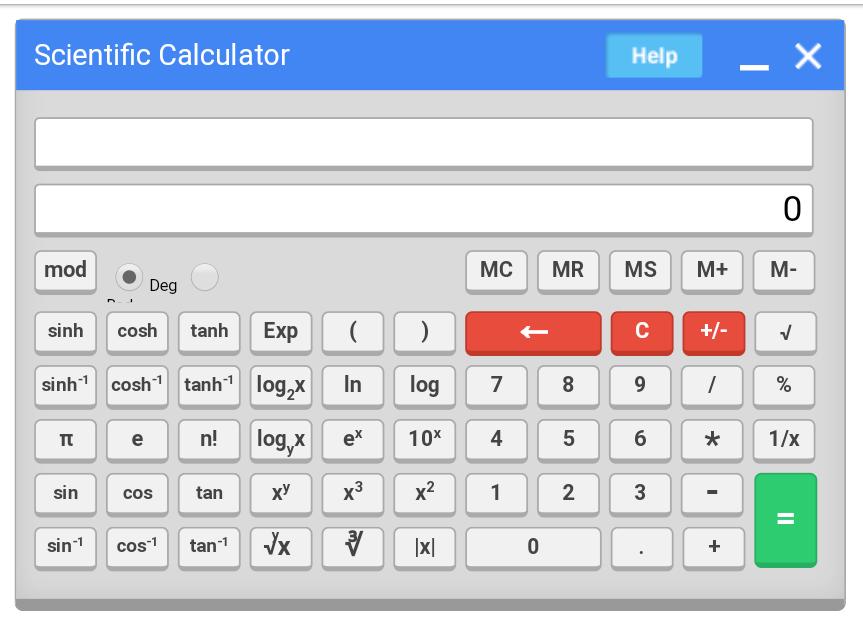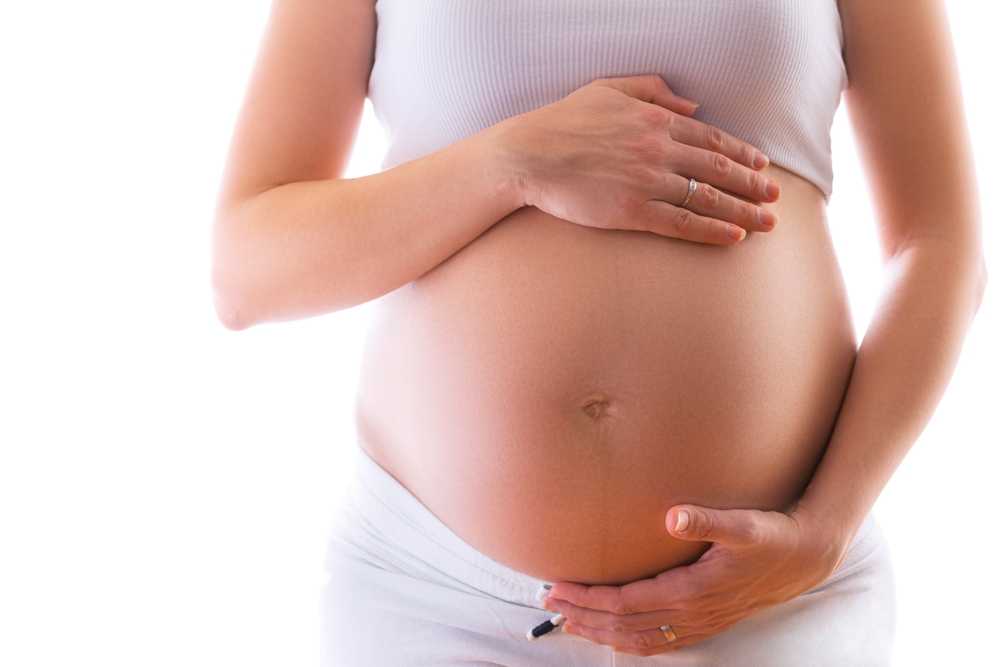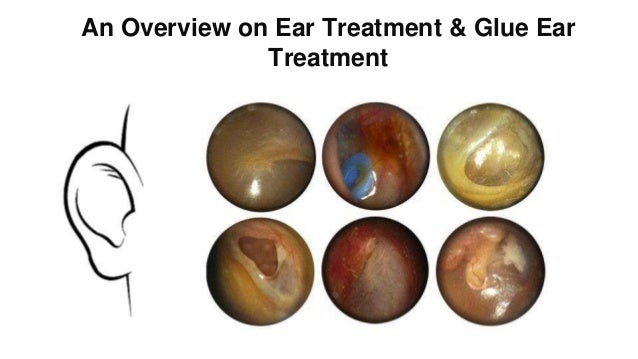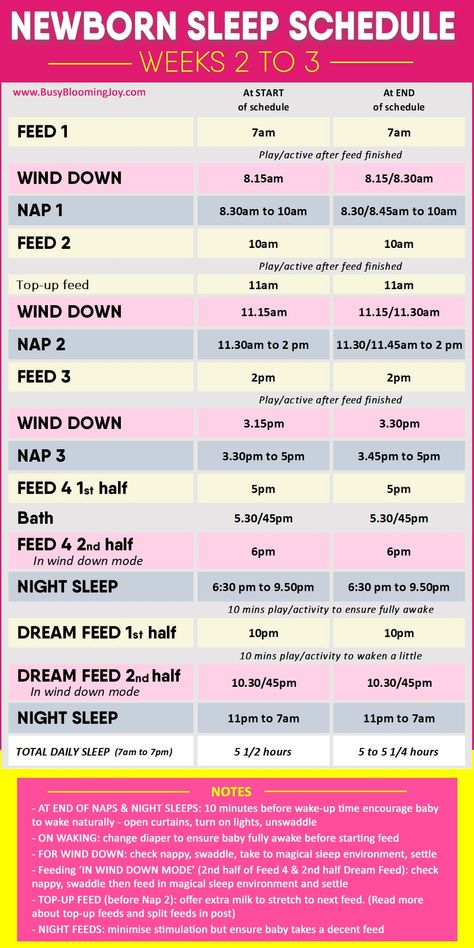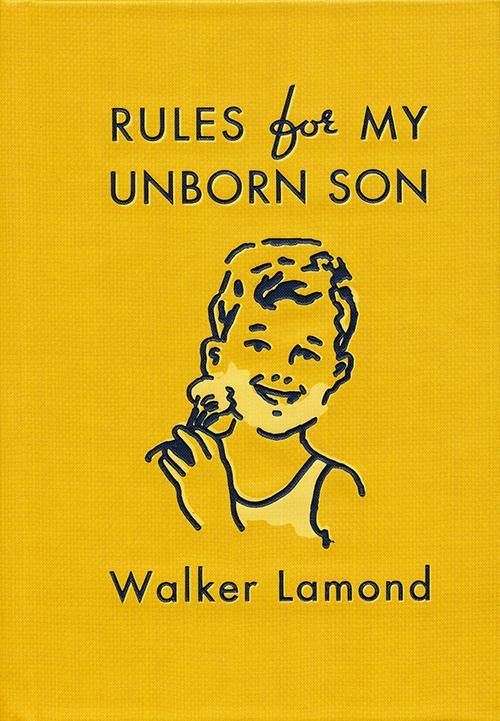Baby features calculator
What Will My Baby Look Like?
Predicting what your baby will look like isn’t that tough with a little bit of information about mom and dad.
Try it out by making selections in Experienced Mommy’s Baby Predictor and click “See Results”!
If you have questions about the choices or how things are calculated, read on and feel free to comment.
Page Contents
Genetics AccuracyBaby Eye Color CalculatorWhat Color Will My Baby's Eyes Be?Which parent determines the eye color of baby?What eye color is dominant?What is the rarest eye color?Can brown-eyed parents have a blue-eyed baby?Are all babies born with grey eyes?What is the most attractive eye color?What is the cause of amber colored eyes?How rare are purple eyes?Is is true that everyone really has brown eyes?Why are hazel eyes so hard to predict?Do black or grey eyes exist?Relationship of Eye Color to PersonalityWhat Color Hair Will My Baby Have?What color will my baby's hair be?What determines hair color?Is brown or blonde hair dominant?Do babies' hair change color?Which parent does the hair gene come from?Is curly hair a dominant trait?Can parents with straight hair have a child with curly hair?What makes your hair curly?What is the difference between curly hair and wavy hair?What are the different hair types?What Skin Color Will My Baby Have?Will Baby's Skin Get Darker After Birth?Can a white person have a black baby or a black person have a white baby?Is Ear Color Related to Skin Color?What is Albinism?Variation in Skin Color of AfricansEarlobe PredictionWill my baby's earlobes be attached or free?Which earlobe shape is dominant?What are earlobes for?Widows Peak: Will My Baby Have One?What is a widow's peak?Will my baby have a widow's peak?Cleft Chin: Will My Baby Have One?What is a cleft chin?Will my baby have a cleft chin?Are cleft chins dominant?Dimples: Will My Baby Have Dimples?What are dimples?Will my baby have dimples?About Dominant and Inherited TraitsWhat do you inherit from your parents?Do you get more DNA from your mother or father?What are inherited traits?What are dominant and recessive traits?
Genetics Accuracy
For nearly all traits, the Experienced Mommy’s Baby Predictor outputs several possibilities along with how likely each one may be. You may be wondering why we can’t tell you exactly what traits your baby will have. There are two main reasons for this.
First of all, despite what you learned about Mendelian genetic inheritance in high school biology, very few traits are determined by only a single gene. Most traits, also called phenotypes, are polygenic traits. Even simple characteristics, like eye color, can have dozens of different genes that play a role. This makes it very complicated to make exact predictions, since we would have to know both parents’ gene variants for all of these different genes.
The second reason is that many traits are influenced by both genes and the environment. For example, while your DNA plays a role in determining how tall you will grow, this can also differ depending on other factors such as nutrition. For that reason, we can’t know for sure how tall someone will be just based on their genes alone.
Certain populations related by ethnicity, ancestory or geographic location also tend to share common genetic characteristics. Because of commonly shared genetics a population may have a greater or lesser tendency toward a particular trait than the typical average.
Because of commonly shared genetics a population may have a greater or lesser tendency toward a particular trait than the typical average.
Despite the uncertainty, there is extensive statistical data that makes it possible to suggest probabilities. For example, if both parents have blue eyes, your baby is very likely to have blue eyes as well, so the calculator gives a 99% chance of this. However, it’s still possible that your baby will not have blue eyes! Our calculator can tell you what’s likely to happen, but not what’s certain to happen.
Baby Eye Color Calculator
What Color Will My Baby’s Eyes Be?
It’s hard to be certain! Scientists used to think that eye color was controlled by a single gene that controlled the production of melanin. Melanin is the pigment that determines your eye color: people with more melanin have brown eyes, while people with less melanin have blue or green eyes. However, we now know that at least 10 different genes are involved in melanin production, making it nearly impossible to predict a baby’s eye color based on their parents. That’s why the Experienced Mommy’s Baby Predictor tells you the probability of each eye color; no one can be 100% sure.
That’s why the Experienced Mommy’s Baby Predictor tells you the probability of each eye color; no one can be 100% sure.
Which parent determines the eye color of baby?
The genes that control eye color are not located on a sex chromosome, so both parents contribute equally to the baby’s eye color.
What eye color is dominant?
It’s a common misconception that brown eyes are dominant to blue and green eyes. In reality, it’s much more complicated! Because eye color is controlled by multiple genes, no color is truly dominant over the rest.
What is the rarest eye color?
Green! It’s estimated that only 2% of the world’s population has naturally green eyes. Outside of the “normal” eye colors, there are also rarer colors caused by genetic conditions such as albinism.
Can brown-eyed parents have a blue-eyed baby?
Yes! Because eye color is controlled by several different genes, it is entirely possible (though unlikely) for brown-eyed parents to have a blue-eyed baby. Conversely, blue-eyed parents can also have a brown-eyed baby.
Conversely, blue-eyed parents can also have a brown-eyed baby.
Are all babies born with grey eyes?
Not always: babies of African or Asian descent are often born with dark eyes. However, it’s true that many Caucasian babies are born with blue or grey eyes that darken over time. This is because melanocytes, the cells that produce pigment in your eyes, are activated by light. When a newborn is exposed to light for the first time at birth, their melanocytes start producing a dark pigment called melanin, which takes several months to build up. Your baby’s eyes should reach their final color by the time he or she is six to nine months old.
What is the most attractive eye color?
According to one study, blue-eyed men tend to find blue-eyed women more attractive, while brown-eyed men have no preference. Women also seem to have no eye color preference.
What is the cause of amber colored eyes?
Amber irises have a low amount of melanin and a comparatively high level of lipochrome.
How rare are purple eyes?
Back in 2005, there was an internet myth about mysterious, pale-skinned people with purple eyes. This has been thoroughly debunked. There is no documented proof of a person with naturally purple eyes. Even actress Elizabeth Taylor, whose beautiful violet eyes were admired by many, actually had dark blue eyes that were made to look purple by her makeup and clothing.
Is is true that everyone really has brown eyes?
Technically, yes! Everyone’s iris (the colored area surrounding the pupil) is some shade of brown, depending on how much melanin you have (darker brown means more melanin). However, if you have less melanin, an optical illusion called the Tyndall effect causes your eyes to appear blue or green. This is similar to why the sky appears blue!
Why are hazel eyes so hard to predict?
You may have noticed that our Baby Predictor is less certain of your baby’s eye color when either parent has hazel eyes. This is because hazel is intermediate between green eyes and brown eyes. As a result, a person with hazel eyes has some gene variants that increase the chance of brown eyes, and other gene variants that increase the chance of green or blue eyes. Since any of these variants are equally likely to be passed down, a parent with hazel eyes can have a baby with a variety of possible eye colors.
As a result, a person with hazel eyes has some gene variants that increase the chance of brown eyes, and other gene variants that increase the chance of green or blue eyes. Since any of these variants are equally likely to be passed down, a parent with hazel eyes can have a baby with a variety of possible eye colors.
Do black or grey eyes exist?
Eyes that appear black are actually very dark brown due to expressing high levels of the pigment melanin. This is common among people from eastern Asia.
In contrast, grey eyes appear to be distinct from other colors. Like blue eyes, grey eyes have very little melanin, causing them to appear light in color. However, grey-eyed people have more of a protein called collagen in their eyes. This changes the way that light reflects from their eyes, resulting in a grey appearance. Grey eyes are fairly rare, but have been observed in people from Northern and Eastern Europe.
Relationship of Eye Color to Personality
There have been extensive studies performed on the relationship between iris color and personality traits (another here). For example, one study showed that Caucasian women with light-colored eyes, blue and green, tolerate pain better than Caucasian women with darker colored eyes.
For example, one study showed that Caucasian women with light-colored eyes, blue and green, tolerate pain better than Caucasian women with darker colored eyes.
What Color Hair Will My Baby Have?
What color will my baby’s hair be?
Hair color is impossible to predict with certainty because it’s controlled by dozens, or possibly even hundreds, of different genes. If both parents have blonde hair, then your baby is more likely to also be blonde, but it’s also possible that he or she could have dark hair.
What determines hair color?
Just like eye and skin color, hair color is determined by a pigment called melanin. Most people’s hair contains a form of melanin called eumelanin, which is dark brown in color. People with lots of eumelanin have black or brown hair, while people with less melanin have blonde hair.
Many different genes play a role in determining how much melanin your hair will contain. If you’re a redhead, your hair contains an entirely different kind of melanin called pheomelanin.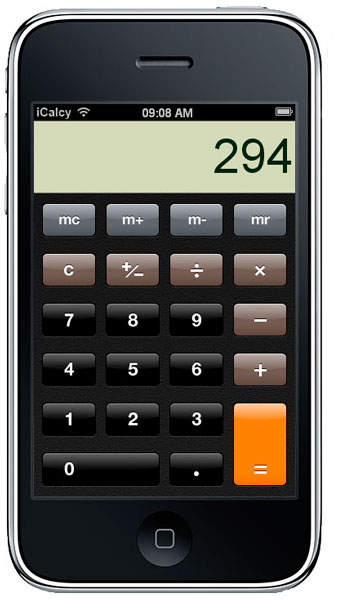 Most redheads have a mutant form of a gene called MCR1. As a result, two redheaded parents are very likely (though not certain) to have children with red hair as well.
Most redheads have a mutant form of a gene called MCR1. As a result, two redheaded parents are very likely (though not certain) to have children with red hair as well.
Is brown or blonde hair dominant?
Hair color is controlled by many different genes, so no color is truly dominant.
Do babies’ hair change color?
It’s fairly common for babies’ hair to change color or texture as they grow. According to one study of 232 white European children, hair color tends to darken in the first few months of life, then grow lighter during the toddler years, and then darken to its final shade by the age of 5.
Which parent does the hair gene come from?
The genes controlling hair color and texture are contributed equally by both parents.
Is curly hair a dominant trait?
Just like hair color, hair color is controlled by multiple different genes. As a result, neither curly hair nor straight hair is dominant.
Can parents with straight hair have a child with curly hair?
Yes! While straight-haired parents are more likely to have a straight-haired baby, it’s also entirely possible for their baby to be born with curly hair. Similarly, two parents with curly hair can have a straight-haired baby.
Similarly, two parents with curly hair can have a straight-haired baby.
What makes your hair curly?
Hair texture is determined by how your hair follicles are shaped. Round follicles produce straight hair, while more oval-shaped follicles produce wavy or curly hair. It’s kind of like dragging a pair of scissors along a ribbon to make it curl: an oval-shaped follicle puts pressure on the growing hair and makes it curly!
What is the difference between curly hair and wavy hair?
If your hair follicles are only slightly oval-shaped, your hair will be under less pressure and thus will be wavy. But if your follicles have a more extreme oval shape, your hair will turn out more curly.
What are the different hair types?
Celebrity hairstylist Andre Walker came up with the curl type classification system. This system groups hair texture into four different types: Type 1 (straight), Type 2 (wavy), Type 3 (curly), and Type 4 (kinky).
You can find a baby hairbrush for all types of hair with our guide here at Experienced Mommy.
What Skin Color Will My Baby Have?
Skin color is another genetically complicated phenotype. The relative lightness and darkness of skin color is related to the quantity of melanin polymer secreted into the skin. This means that generally speaking that babies end up with a shade of skin color that represents the mix of genes inherited maternally and paternally.
Although the skin color can’t be predicted exactly, a blend of the parent’s skin tones is the most likely result. However, there are many examples of bi-racial couples having children with very different skin color from each other.
Skin appearance and function is also affected by a single gene, melanocortin 1 which regulates freckling and sun sensitivity. It is believed that melanin levels adapted to increase vitamin D production in areas of low ultraviolet light and increase skin protection in high ultraviolet light intensity areas such as the Sahara desert.
Will Baby’s Skin Get Darker After Birth?
Yes. At birth skin is often purple which changes to red as baby begins to breathe oxygen. The redness tends to go away in the first day. Yellowish skin in newborns may be caused by jaundice which occurs in half of all baby births. Although jaundice is common, it may need to be treated if it persists or is severe.
At birth skin is often purple which changes to red as baby begins to breathe oxygen. The redness tends to go away in the first day. Yellowish skin in newborns may be caused by jaundice which occurs in half of all baby births. Although jaundice is common, it may need to be treated if it persists or is severe.
After birth melanocyte skin cells increase their production of the pigment melanin and skin can get darker. Skin color reaches its “normal” tone by 6 months. But skin color never stops changing entirely.
Can a white person have a black baby or a black person have a white baby?
Yes. Because skin color is influenced by genes passed along from mom and dad, recessive genes in both parents may result in a baby with skin color that is quite different than their parents. However, this is quite rare. One unique case is the Dean twins. One girl is dark the other light and their parents are Caucasian and African American.
Some people believe that ear color is sometimes an indication of a baby’s future skin color. Often the tops of a baby’s ears are a darker color. The baby’s final skin color may end up being the same as the tops of their ears when they were infants. We are not aware that this observation has been studied scientifically.
Often the tops of a baby’s ears are a darker color. The baby’s final skin color may end up being the same as the tops of their ears when they were infants. We are not aware that this observation has been studied scientifically.
What is Albinism?
Albinism is a congenital disorder characterized low levels of the melanin pigment and resulting in light skin, hair and eye color and frequently, visual impairment. Parents of any race can have children affected by albinism. In fact, sub-Saharan Africans have the highest current incidence of albinism.
Variation in Skin Color of Africans
Scientists have noted extreme variations in the color of skin across ethnicities on the African continent. A University of Pennsylvania study found that a series of specific genes that influence melanin and eumelanin production.
Earlobe Prediction
Will my baby’s earlobes be attached or free?
Maybe you’re catching on to a trend by now. Like nearly every physical trait, earlobe shape is controlled by several different genes, so it’s impossible to predict with absolute certainty. In fact, many people have earlobes that are somewhere in between attached and free. Two parents with attached earlobes are more likely to have a baby with attached earlobes, and vice versa, but nothing is certain.
In fact, many people have earlobes that are somewhere in between attached and free. Two parents with attached earlobes are more likely to have a baby with attached earlobes, and vice versa, but nothing is certain.
Which earlobe shape is dominant?
Earlobe shape is controlled by at least 49 different genes, so neither shape is dominant.
What are earlobes for?
It’s possible that earlobes might help to keep the ears warm by increasing their blood supply. But it’s generally accepted that earlobes have no biological function. Did you know that people with slightly uneven earlobes are rated as better leaders?
Unattached Free Ear LobeWidows Peak: Will My Baby Have One?
What is a widow’s peak?
A widow’s peak is a V-shaped point at the center of your hairline.
A Widow’s PeakWill my baby have a widow’s peak?
Very little research has been done on the genetics of widow’s peaks, so it’s tricky to make predictions. It’s probably controlled by several different genes, so while two parents with a widow’s peak will be more likely to have a baby with a widow’s peak too, it’s also possible that the baby could have a perfectly straight hairline.
Cleft Chin: Will My Baby Have One?
What is a cleft chin?
A Cleft ChinA cleft chin (also called a “chin dimple”) has puckered skin at its midline, while people with a smooth chin have no pucker. In fact, many people lie somewhere on a spectrum between a fully smooth or cleft chin.
Will my baby have a cleft chin?
Currently, there’s not much research about how to predict a cleft chin. However, one small study from the 1960s reported that two cleft-chinned parents have a 91% chance of having a baby with a cleft chin, suggesting that it’s strongly influenced by genetics. So it’s likely (though not certain) that your baby’s chin will look like yours!
Are cleft chins dominant?
Cleft chins are probably controlled by several different genes, so neither chin shape is fully dominant. However, cleft chins do seem to be at least partially dominant over smooth chins.
Dimples: Will My Baby Have Dimples?
What are dimples?
Dimples are small indentations on the cheeks. They often appear when you’re smiling.
They often appear when you’re smiling.
Will my baby have dimples?
There’s very little research about whether dimples are inherited. In fact, many babies are born with dimples that later fade away as the baby fat in their cheeks disappears. Babies can also be born without dimples and develop them later in life. That being said, dimples do tend to run in families, so if both parents have dimples, there’s a good chance that your baby will too!
About Dominant and Inherited Traits
What do you inherit from your parents?
Every cell in your body contains 23 unique chromosomes. Each chromosome has 2 copies, bringing the total to 46. One copy of every chromosome is inherited from your mother, and the other copy is inherited from your father. Since egg and sperm cells have only one copy of each chromosome, they have a random chance of receiving the maternal or paternal version of each one, which is then passed down to your baby.
Do you get more DNA from your mother or father?
You inherit about half of your genes from each parent. However, there is a special type of DNA that comes only from your mother: mitochondrial DNA. Mitochondria, famously called the “powerhouse of the cell,” are in charge of energy production, and they have their own DNA that’s completely separate from the rest of your genes. All of a baby’s mitochondria come from the egg cell, so as a result, all your mitochondrial DNA is from your mother.
However, there is a special type of DNA that comes only from your mother: mitochondrial DNA. Mitochondria, famously called the “powerhouse of the cell,” are in charge of energy production, and they have their own DNA that’s completely separate from the rest of your genes. All of a baby’s mitochondria come from the egg cell, so as a result, all your mitochondrial DNA is from your mother.
What are inherited traits?
Inherited traits are influenced by your DNA, and as a result, they can be passed down from parents to children. Some traits are fully inherited, including certain kinds of genetic diseases. However, nearly all traits are partially inherited and partially influenced by the environment. For example, while your genes play a major role in determining your height, it can also be influenced by outside factors such as nutrition.
What are dominant and recessive traits?
A dominant trait only requires one copy to be visible, while recessive traits require two copies. Let’s look at lactose intolerance as an example. People with lactose intolerance experience digestive problems when they consume dairy. Lactose intolerance is a recessive trait, meaning that you need to inherit this trait from both of your parents in order to experience it. In contrast, polydactyly (having extra fingers or toes) is a dominant trait. You only need to inherit a copy from one of your parents in order to have polydactyly.
Let’s look at lactose intolerance as an example. People with lactose intolerance experience digestive problems when they consume dairy. Lactose intolerance is a recessive trait, meaning that you need to inherit this trait from both of your parents in order to experience it. In contrast, polydactyly (having extra fingers or toes) is a dominant trait. You only need to inherit a copy from one of your parents in order to have polydactyly.
Baby Eye Color Calculator & Predictor
Do you have a little one on the way? Are you excited to learn what color eyes they will grow to have? Our easy-to-use baby eye color calculator can show you what determines a baby’s eye color.
What Determines a Baby’s Eye Color?
Your children inherit their eye colors from you and your partner. It’s a combination of mom and dad’s eye colors – generally, the color is determined by this mix and whether the genes are dominant or recessive.
Since the inheritance of eye color is polygenic, eye color traits are influenced not only by one gene but by various genes. Simply put, what determines a baby’s eye color includes:
Simply put, what determines a baby’s eye color includes:
-Parents’ eye colors
-If parents are homozygous or heterozygous dominant for a specific color
-If parents’ eye color genes are dominant or recessive
Understanding Gene Dominance
Every child carries two copies of every gene – one comes from mom, and the other comes from dad. If it’s a homozygous match, that means that both copies from each parent are the same. If heterozygous, it means that each composition differs.
Genes from brown and green eyes are considered dominant, often determining what color eyes your baby will have if you and your partner have these colors. However, there’s still a chance that two blue-eyed parents end up giving birth to a baby with brown eyes! According to research by the University of Delaware, blue eyes are not determined by recessive genetics - eye color is determined by the interaction between a variety of genes. This is what makes baby eye color so unpredictable!
According to World Atlas:
-Between 55% and 79% of people worldwide have brown eyes.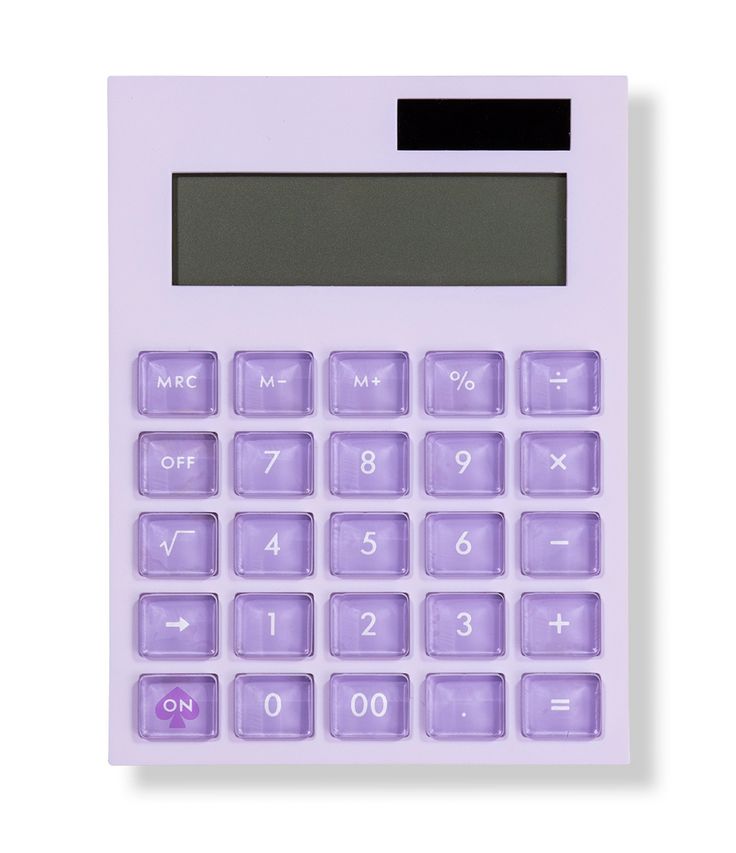
-Between 8% and 10% of people have blue eyes.
-About 2% of people have green eyes.
Check out our simple baby eye color calculator to predict where your baby will fall on the scale!
My TestEye Color Predictor for Babies
PATERNAL
GRANDMOTHER
Eyes color :
UNDEFINED Click on the image to select eye color
PATERNAL
GRANDFATHER
Eyes color :
UNDEFINED Click on the image to select eye color
MATERNAL
GRANDMOTHER
Eyes color :
UNDEFINED Click on the image to select eye color
MATERNAL
GRANDFATHER
Eyes color :
UNDEFINED Click on the image to select eye color
FATHER
Eyes color :
UNDEFINED Click on the image to select eye color
MOTHER
Eyes color :
UNDEFINED Click on the image to select eye color
Baby eye color
BROWN
16%
GREEN
18. 75%
75%
BLUE
6.25%
Baby Eye Color Calculator for Grandparents
Congratulations on becoming a grandparent! Watching your child have their own baby is one of the most magical feelings in the world.
It’s time to get excited about the baby’s personality and features! Are you excited to see what they’ll inherit from you? Do you hope they’ll have the same eye color as you? With our easy-to-use baby eye color calculator for grandparents, you can help your kids get ready for their newborn by better predicting what the baby’s eye color might be.
What Determines a Baby’s Eye Color?
Your grandchildren inherit their eye colors from your child and their partner. It’s a combination of mom and dad’s eye colors.
Generally, the color is determined by this mix and whether the genes are dominant or recessive.
Since the inheritance of eye color is polygenic, eye color traits are influenced not only by one gene but by various genes. Simply put, what determines a baby’s eye color includes:
Simply put, what determines a baby’s eye color includes:
-Parents’ eye colors
-If parents are homozygous or heterozygous dominant for a specific color
-If parents’ eye colors are dominant or recessive
However, since you played a part in the color of your own child’s eyes, it technically has an impact on what eye color the newborn baby may have.
If you can’t determine the exact color of your own eyes, don’t worry! With our baby eye calculator for grandparents, we can help you predict the color of your soon-to-be grandchild as long as you can properly assess the parent’s eye color
Child development at different age stages
CHILD DEVELOPMENT AT DIFFERENT AGE STAGES
Infancy (first year of life)
When a child is born, it physically separates from its mother. He finds himself in completely different conditions: cold, bright light, an air environment that requires a different type of breathing, the need to change the type of food. To adapt to these new, alien conditions, the child is helped by hereditarily fixed mechanisms - unconditioned reflexes.
To adapt to these new, alien conditions, the child is helped by hereditarily fixed mechanisms - unconditioned reflexes.
What kind of unconditioned reflexes does a newborn have?
This is, first of all, a system of food reflexes. When touching the corners of the lips or tongue, sucking movements appear, and all other movements are inhibited. Because the baby is completely focused on suckling, this response has been called "feeding focus".
Among the unconditioned reflexes, protective and indicative ones stand out. Some reflexes are atavistic - they are inherited from animal ancestors, but are useless for the child and soon disappear. So, for example, the reflex, sometimes called the "monkey", disappears already in the second month of life.
Unconditioned reflexes of the newborn
Stimuli Reflexes
Action of bright light Eyes close
Slap on the bridge of the nose Eyes close
Hand clap near the baby's head Eyes close
Turning the baby's head to the right Arms flex rapidly
Finger pressing on child's palm Child's toes clenching and unclenching
Finger pressing on child's soles Toes clenching
With a scratching movement, we draw a finger along the sole from the fingers to the heel The big toe rises, the rest are extended
Prick the sole with a pin Knee and foot bend
Raise the lying child with the stomach down The child tries to raise his head, stretches his legs
By the end of the first month of life, the first conditioned reflexes . In particular, the child begins to respond to the feeding position: as soon as he is in a certain position on the mother's lap. v him there are sucking movements. But in general, the formation of conditioned reflexes is characteristic of a later time.
In particular, the child begins to respond to the feeding position: as soon as he is in a certain position on the mother's lap. v him there are sucking movements. But in general, the formation of conditioned reflexes is characteristic of a later time.
How can you describe the mental life of a newborn? The brain of a small child continues to develop, it is not fully formed, therefore, mental life is associated mainly with subcortical centers, as well as an insufficiently mature cortex. The sensations of a newborn are undifferentiated and inextricably merged with emotions, which made it possible for L. S. Vygotsky to speak of “sensory emotional states or emotionally emphasized states of sensations.”
Important events in the child's mental life are the emergence of auditory and visual concentration. Auditory concentration appears at 2-3 weeks. A sharp sound, say, of a door slamming, causes a cessation of movements, the child freezes and becomes silent. Later, at 3-4 weeks, the same reaction occurs to the person's voice. At this time, the child not only focuses on the sound, but also turns his head towards its source. Visual concentration, which appears at 3-5 weeks, outwardly manifests itself in the same way: the child freezes and holds his gaze (of course, not for long) on a bright object.
At this time, the child not only focuses on the sound, but also turns his head towards its source. Visual concentration, which appears at 3-5 weeks, outwardly manifests itself in the same way: the child freezes and holds his gaze (of course, not for long) on a bright object.
Newborn spends time in sleep or drowsiness. Gradually, separate moments, short periods of wakefulness, begin to stand out from this drowsy state. Auditory and visual concentration give wakefulness an active character.
A child comes into this world weak and completely helpless. Such helplessness, complete dependence on an adult constitute the specifics of the social situation of the development of an infant.
The newborn, having acquired the ability to respond to the voice of the mother caring for him, to see her face, establishes new subtle emotional bonds with her. At about 1 month, the baby, when he sees his mother, stops looking at her face, throws up his arms, quickly moves his legs, makes loud noises and begins to smile. This stormy emotional reaction has been called the "revitalization complex". The revitalization complex, which includes a truly human feature - a smile - marks the appearance of the first social need - the need for communication. And the formation of a child's need for communication means that in his mental development he is moving into a new period. The transitional stage of the newborn is coming to an end. Infancy begins.
This stormy emotional reaction has been called the "revitalization complex". The revitalization complex, which includes a truly human feature - a smile - marks the appearance of the first social need - the need for communication. And the formation of a child's need for communication means that in his mental development he is moving into a new period. The transitional stage of the newborn is coming to an end. Infancy begins.
Infancy
The baby is growing rapidly. The growth of a healthy child during the first year of his life increases by about 1.5 times, and weight - by almost 2 times.
Physical development of the infant
Time of onset Motor development
1 month Raises chin
2 months Raises chest
3 months Reaches for an object, but usually misses
4 months Sitting with support
5-6 months Grasping objects
7 months Sitting no support
8 months Sitting up unaided
9 months Standing with support; crawls on stomach
10 months Crawls on hands and knees; walks with two hands
11 months Stands without support
12 months Walks with one hand
Perception . After the second month, the concentration becomes quite long, by 3 months its duration reaches 7-8 minutes. At 4 months, the child not only sees, but already looks: he actively reacts to what he sees, moves and squeals.
After the second month, the concentration becomes quite long, by 3 months its duration reaches 7-8 minutes. At 4 months, the child not only sees, but already looks: he actively reacts to what he sees, moves and squeals.
A child in infancy perceives the shape of objects, highlights the contour and their other elements.
It can be said that in infancy, children are already able to navigate in many parameters of objects. They are attracted by contrasts, the movement of observed objects and their other properties.
By 2-3 months, babies usually show interest in objects that are somewhat different from those they have seen before.
The child distinguishes visually perceived objects by shape, complexity and color. An active interest in color appears later, from 6 months.
Spatial perception also develops, in particular depth perception. American psychologists conducted a beautiful experiment with a "cliff": the baby was placed on a glass table, under which there were two large boards attached at different levels. The difference in the levels of these boards, covered with bright, large-sized fabric, created the illusion of a cliff. A small child, tactilely feeling the smooth surface of the glass, crawls to the mother, not noticing the depth. After 8 months, most babies avoid the "cliff" and start crying.
The difference in the levels of these boards, covered with bright, large-sized fabric, created the illusion of a cliff. A small child, tactilely feeling the smooth surface of the glass, crawls to the mother, not noticing the depth. After 8 months, most babies avoid the "cliff" and start crying.
Movement and action. The movements of the baby's hands directed to the object, the palpation of the object appear at about the fourth month of life. At 5-6 months, the child can already grasp an object, which requires complex visual-motor coordination. Grasping is the first purposeful action of the child, it is a prerequisite, the basis for mastering manipulations with objects.
In the second half of the year, hand movements and corresponding actions are intensively developed. The child swings the objects he has grasped, knocks, throws and picks them up again, bites, shifts from hand to hand, etc. Chains of identical, repetitive actions unfold, which Jean Piaget called circular reactions. After 7 months there are "correlating" actions: the child puts small objects into large ones, opens and closes the lids of the boxes. After 10 months, the first functional actions appear, allowing relatively correct use of objects, imitating the actions of adults. The child rolls the car, beats the drum, brings a cup of juice to his mouth.
After 7 months there are "correlating" actions: the child puts small objects into large ones, opens and closes the lids of the boxes. After 10 months, the first functional actions appear, allowing relatively correct use of objects, imitating the actions of adults. The child rolls the car, beats the drum, brings a cup of juice to his mouth.
By the end of the year, the child begins to explore the world of human objects and learn the rules of action with them. A variety of actions lead him to the discovery of more and more new properties of the objects surrounding him. Focusing on the surrounding reality, he is interested not only in "what it is", but also in "what can be done with it."
Perception and action is the basis that makes it possible to judge the initial forms of visual-active thinking in infancy.
By the end of the 1st year, the child is involved in rather complex actions of the game.
Memory. The cognitive development of an infant involves the inclusion of memory mechanisms, of course, its simplest types. Recognition comes first. At 3-4 months old, he recognizes the toy that the adult showed him, preferring it to others that are in his field of vision, a 4-month-old child distinguishes a familiar face from an unfamiliar one.
Recognition comes first. At 3-4 months old, he recognizes the toy that the adult showed him, preferring it to others that are in his field of vision, a 4-month-old child distinguishes a familiar face from an unfamiliar one.
After 8 months, reproduction appears - the restoration of an image in the memory when there is no similar object in front of the child.
Along with cognitive development, emotional development is also observed during infancy. This line of development also directly depends on communication with close adults. In the first 3-4 months, children manifest a variety of emotional states: surprise in response to the unexpected (slowing down of movements, a decrease in heart rate), anxiety in case of physical discomfort (increased movements, increased heart rate, closing eyes, crying), relaxation when a need is satisfied.
After 3-4 months, he smiles at acquaintances, but is somewhat lost at the sight of an unfamiliar adult. At 7-8 months, anxiety increases sharply when strangers appear.
Approximately at the same time, between 7 and 11 months, the so-called "fear of parting" appears - sadness or acute fright at the disappearance of the mother (when she is gone for a long time or she just went out for a while).
Communicating with mother or other close person, by the end of 1 year the baby strives not only for purely emotional contacts, but also for joint actions.
Begins in infancy and speech development. In the first half of the year, speech hearing is formed, and the child himself, with joyful animation, makes sounds, usually called humming. In the second half of the year, babbling appears, in which one can distinguish some repetitive sound combinations, most often associated with the actions of the child. Babble is usually combined with expressive gestures. By the end of 1 year, the child understands 10-20 words spoken by adults, and he himself pronounces one or several of his first words, similar in sound to the words of adult speech. With the appearance of the first words, a new stage in the mental development of the child begins.
Crisis of 1 year
The transition period between infancy and early childhood is commonly referred to as the crisis of 1 year. Like any crisis, it is associated with a surge of independence, the emergence of affective reactions. Affective outbursts in a child usually occur when adults do not understand his desires, his words, his gestures and facial expressions, or understand, but do not do what he wants. The word "impossible" in a crisis period is of particular relevance.
The main acquisition of the transitional period is a kind of children's speech, which L. S. Vygotsky called autonomous. It differs significantly from adult speech both in sound form (phonetic structure) and in meaning (semantic side). The child has his own logic, and his words become ambiguous and situational.
A young child's language is agrammatic. Words do not combine into sentences, but pass into each other like interjections, resembling a series of incoherent exclamations.
Children's speech is understandable only to the closest people who are constantly next to the child and understand the meaning of his words.
So, a one-year-old child, entering a new period - early childhood - already can do a lot: he walks, or at least tries to walk; performs various actions with objects; his actions and perceptions can be organized with the help of speech, since he understands the words of adults addressed to him. He begins to speak and, although his speech is situational and ambiguous, incomprehensible to most of those around him, his opportunities for communicating with loved ones are greatly expanded. The cognitive and emotional development of the child is based primarily on the need to communicate with adults - the central neoplasm of this age period.
Release date calculator
Part 1 of Art. 128 of the Code of Criminal Procedure states that when calculating the terms in months, the hour and the day on which the course of the term begins are not taken into account, with the exception of cases provided for in the Code of Criminal Procedure. The problem is that not a single article of the Code of Criminal Procedure directly states which case should be considered an “exception” and which should not.
Months are used to measure, in particular, the duration of preventive measures. If we proceed from the indicated rule, then the election, change or cancellation of a measure of restraint should “come into force” from 00:00 on the day following the day of the corresponding court decision. But then the accused will spend a whole day (or a little less) under a measure of restraint, and it will not be counted in any way.
Part 8 of Art. 108 of the Code of Criminal Procedure states that the decision of the judge on the choice of a measure of restraint in the form of detention "is subject to immediate execution." The same is said for house arrest (part 6 of article 107 of the Code of Criminal Procedure) and the prohibition of certain actions (part 2 of article 105.1 of the Code of Criminal Procedure refers to the order of article 108 of the Code of Criminal Procedure). Approximately the same is said for the date of entry into force of the sentence. That is, in all these cases it is understood that the date of the adoption of the judgment is included in the period of validity of this decision. This is confirmed in Article 128 in the Commentary on the Code of Criminal Procedure of the Russian Federation, edited by A. V. Smirnov (2012).
This is confirmed in Article 128 in the Commentary on the Code of Criminal Procedure of the Russian Federation, edited by A. V. Smirnov (2012).
But it is generally unclear whether all of these cases fall under the "exception" to the rule described above. If they do not fall, then different articles of the Code of Criminal Procedure contradict each other. If they do, then there are too many exceptions to the rule, which quantitatively almost outweigh the cases of direct application of the rule. It looks like that for none of the border dates (for example, the date of choosing a measure or the date of a sentence), the rule from Part 1 of Art. 128 of the Code of Criminal Procedure of the Russian Federation is not directly applied.
An abstract example: on April 1, the court chose detention for 2 months. May 31 will be the last day of the guard, the accused must be released if the measure is not extended. But according to the logic of part 1 of Art. 128 of the Code of Criminal Procedure, the guard must begin at 00:00 on April 2, and April 1 should not be related to the term of the guard at all. Then, according to the court order, 2 months will have to expire not on May 31, but on June 1. But then the term actually spent in custody will be 2 months and 1 day, and not exactly 2 months appointed by the court, because the person was handcuffed on April 1, and not April 2. There will be a fact of illegal imprisonment for 1 day. If the accused is released on May 31, then he will actually spend exactly 2 months in custody (30 days in April and 31 days in May, a total of 61 days), but according to the papers from April 2, it will turn out 1 month and 29days (total 60 days) - that is, legally, he will be released 1 day earlier than the court ruled, and this is also illegal.
Then, according to the court order, 2 months will have to expire not on May 31, but on June 1. But then the term actually spent in custody will be 2 months and 1 day, and not exactly 2 months appointed by the court, because the person was handcuffed on April 1, and not April 2. There will be a fact of illegal imprisonment for 1 day. If the accused is released on May 31, then he will actually spend exactly 2 months in custody (30 days in April and 31 days in May, a total of 61 days), but according to the papers from April 2, it will turn out 1 month and 29days (total 60 days) - that is, legally, he will be released 1 day earlier than the court ruled, and this is also illegal.
Whatever one may say, contradictions are obtained, unless one accepts the option of the immediate commencement of the procedural term, and forget about the rule from Article 128 of the Code of Criminal Procedure in relation to preventive measures. Only then will the legal and actual terms coincide both in terms of start and end dates, and in duration.